Abstract
The expansion of marine fisheries into tropical waters, which is now occurring, will increase the risks of widespread poisonings because of the abundance of biotoxins in warm-water organisms. However, toxic marine organisms are not only a health hazard but also a possible source of new pharmaceutical products.
A classification of marine intoxicants is given in this paper with special reference to the oral biotoxins which will be of primary concern in the expansion of warm-water fisheries. The biotoxins are both invertebrate (e.g., molluscs, arthropods) and vertebrate (mostly fishes) in origin. Biotoxications of vertebrate origin may be caused by the muscles, the gonads or the blood of certain fishes or by special poison glands not equipped with traumagenic devices. (Venomous fishes, having poison glands and traumagenic spines, etc., are of no direct concern as oral intoxicants.)
The ichthyosarcotoxic fishes, in which the flesh is poisonous, appear to constitute the most significant health hazard. A list of fishes reported as causing ciguatera poisoning (one of the most serious and widespread forms of ichthyosarcotoxism) is included in this paper.
Full text
PDF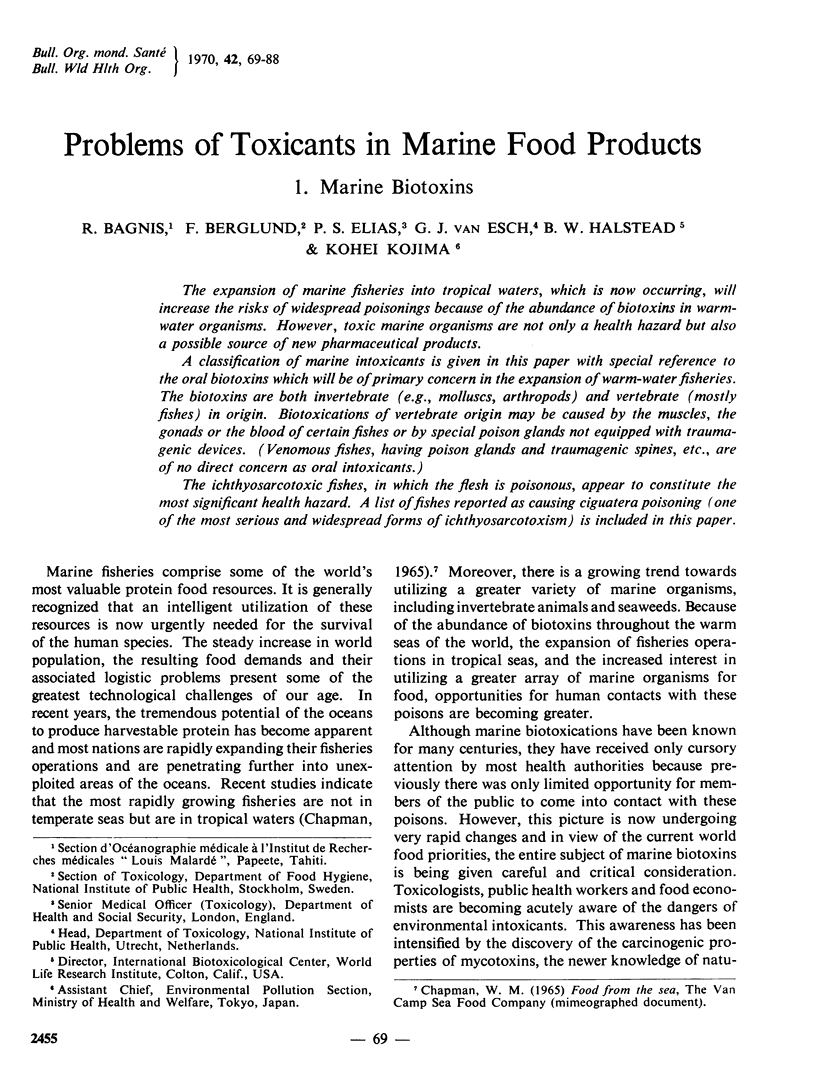




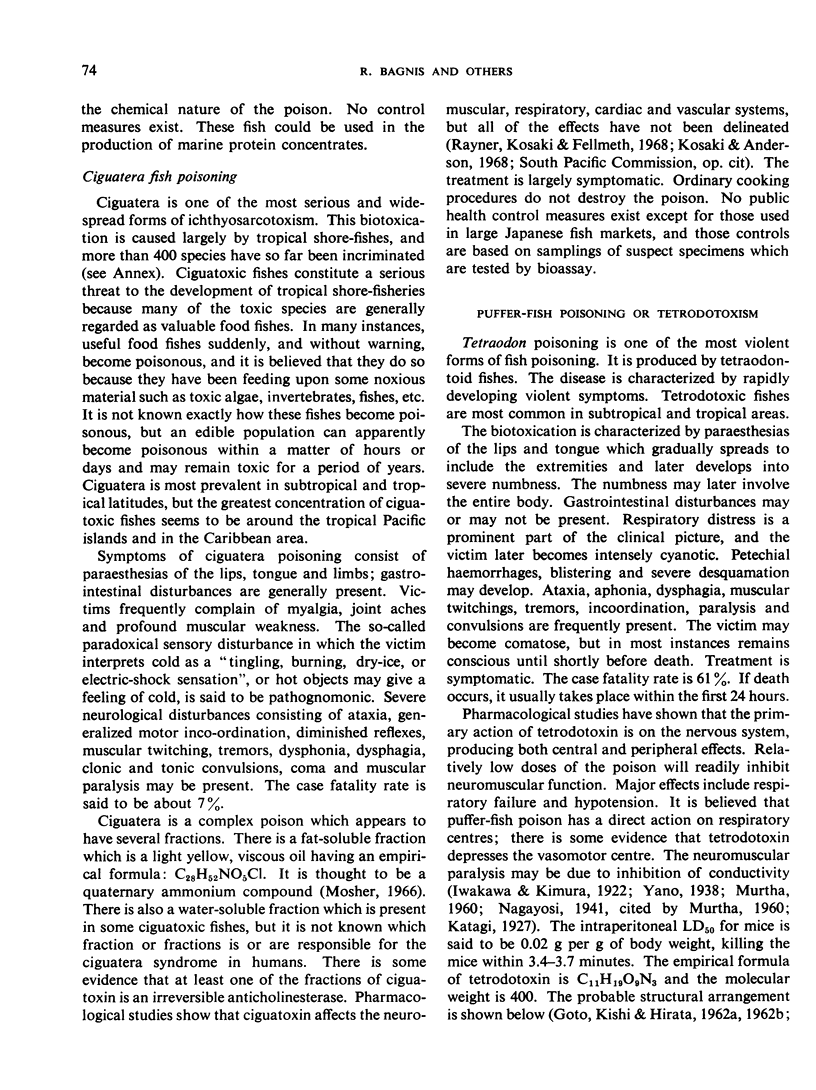

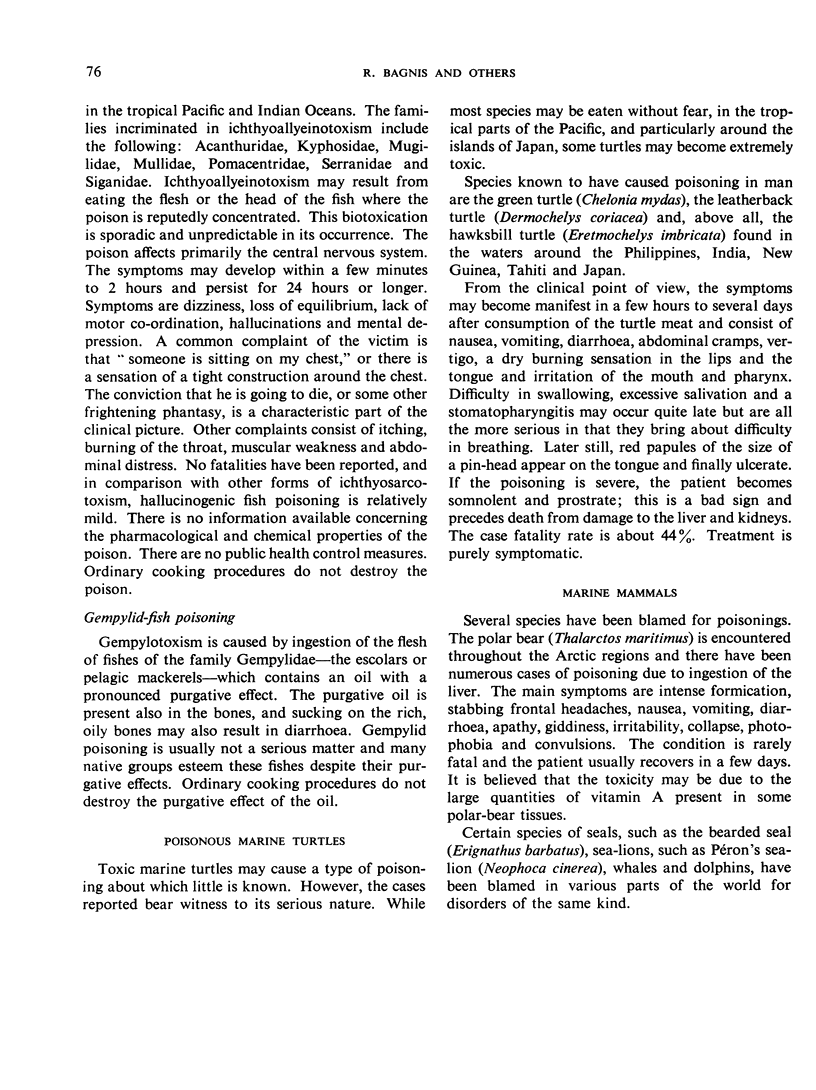

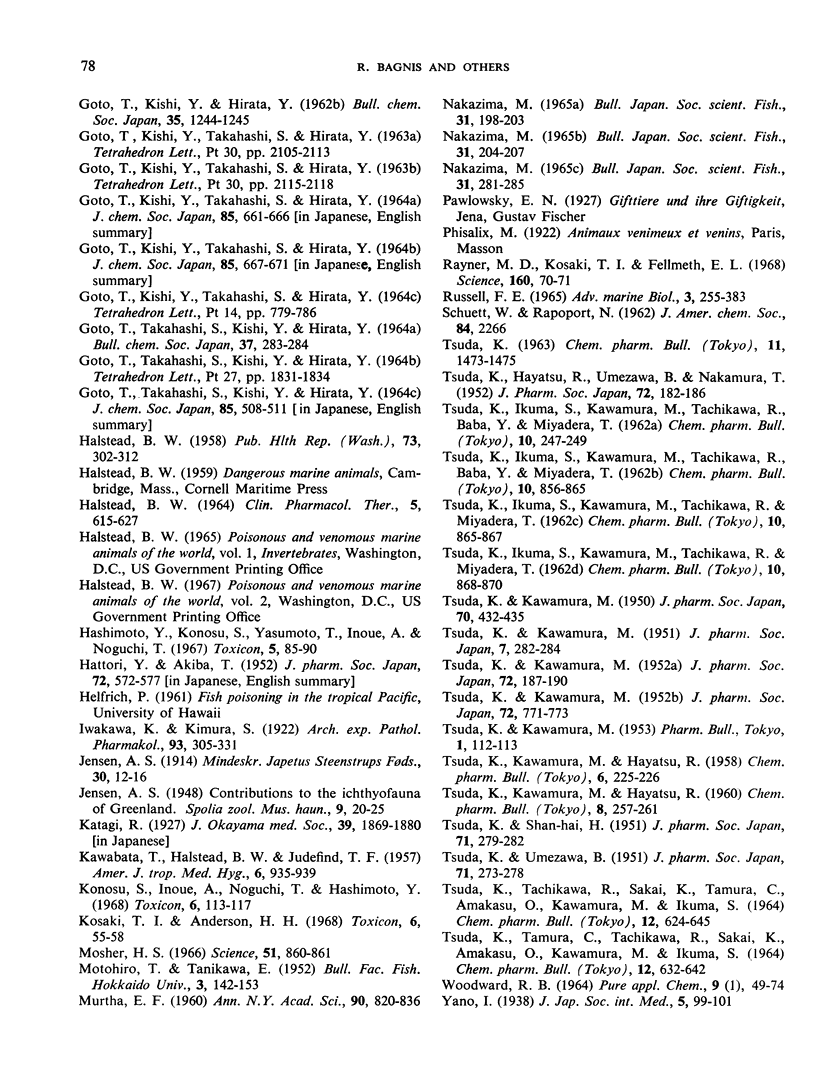
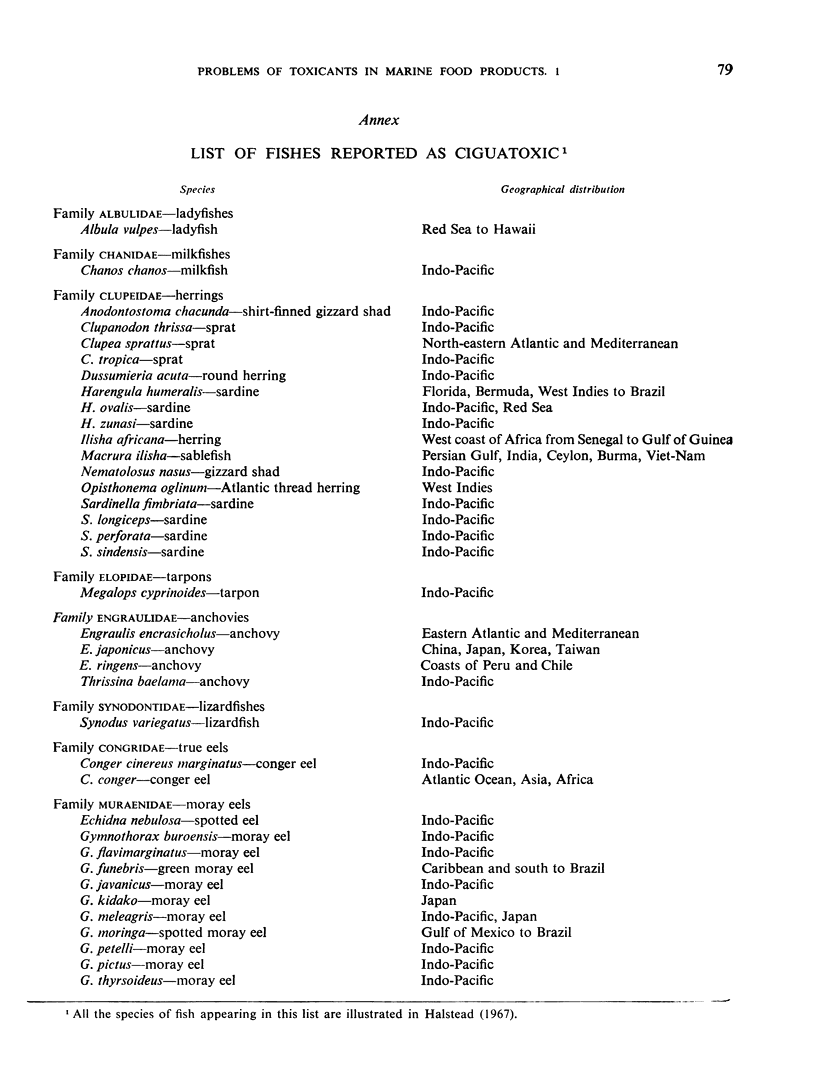



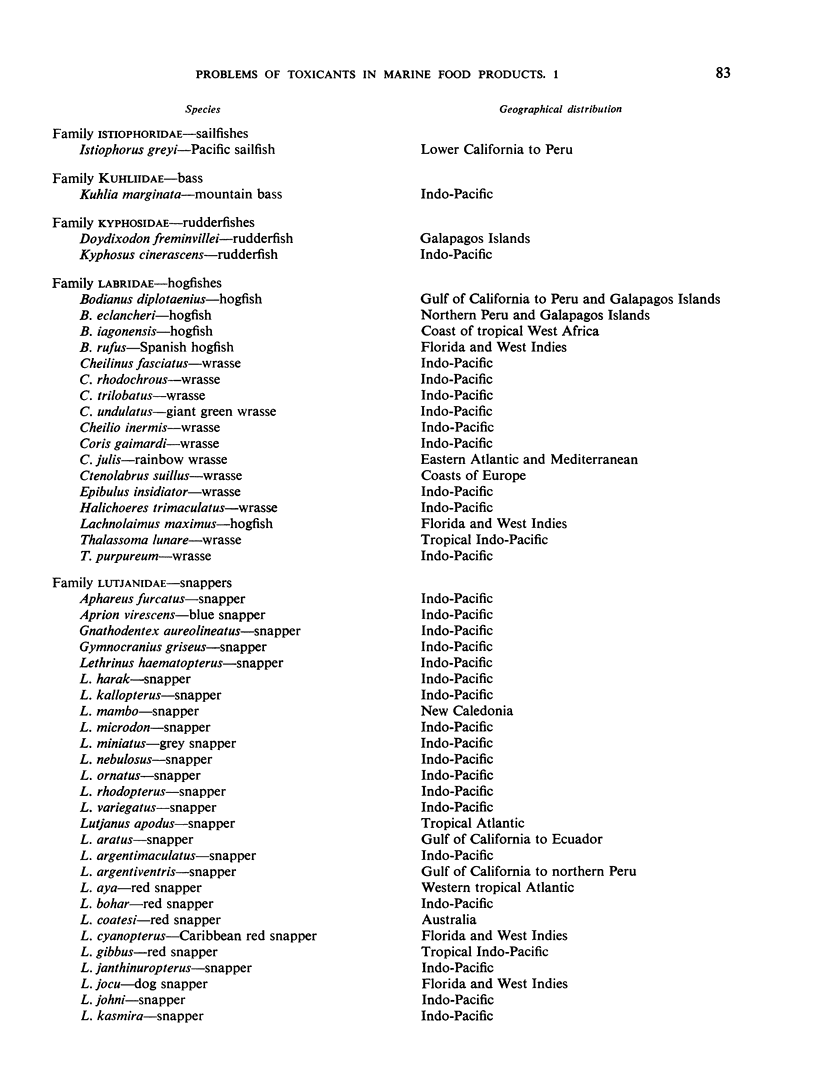
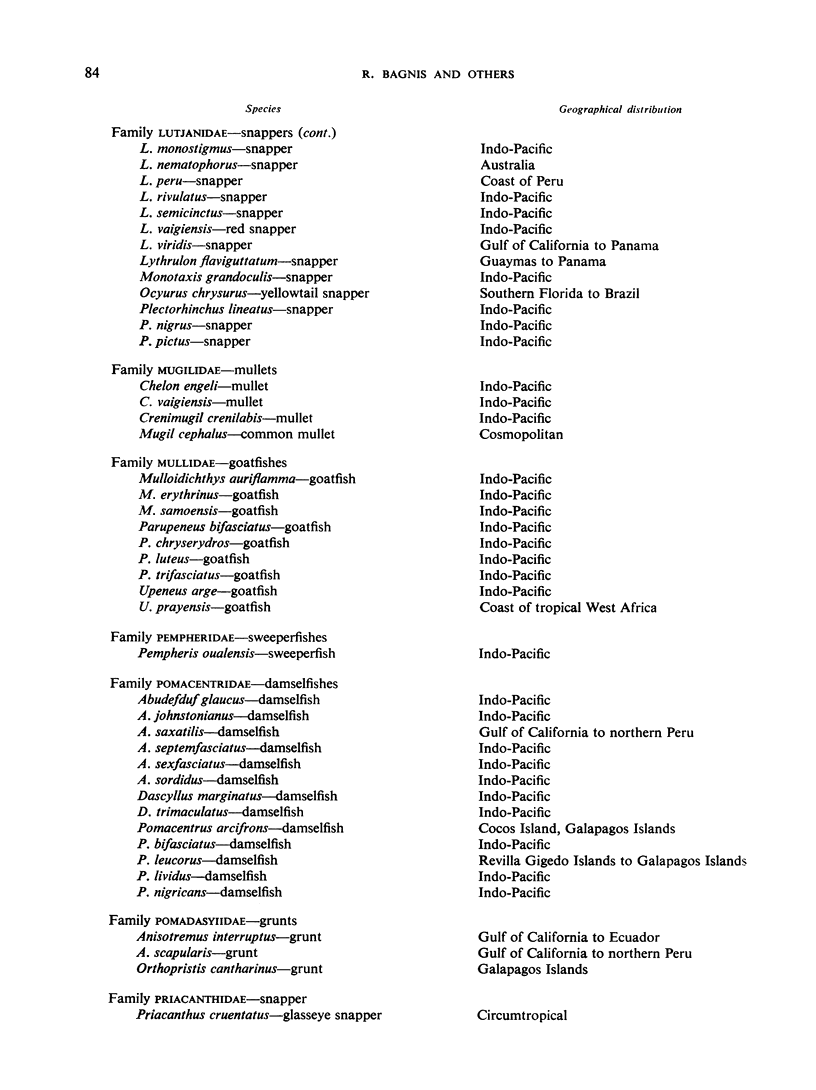
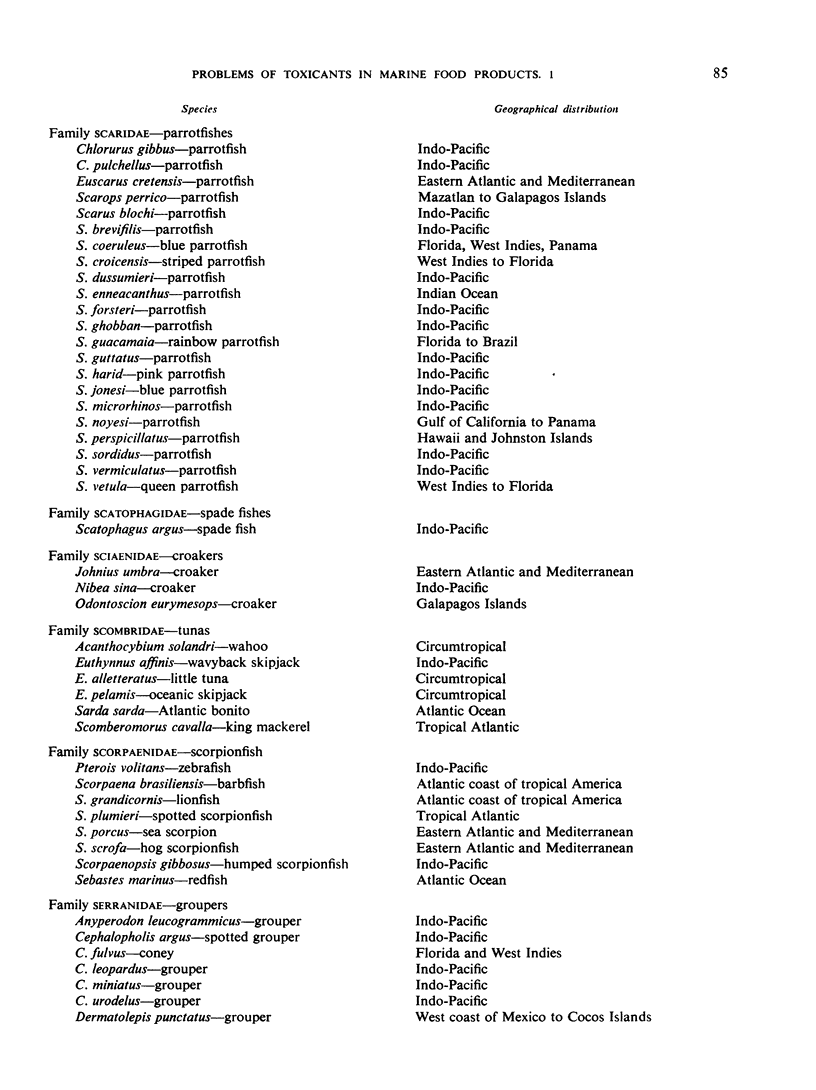
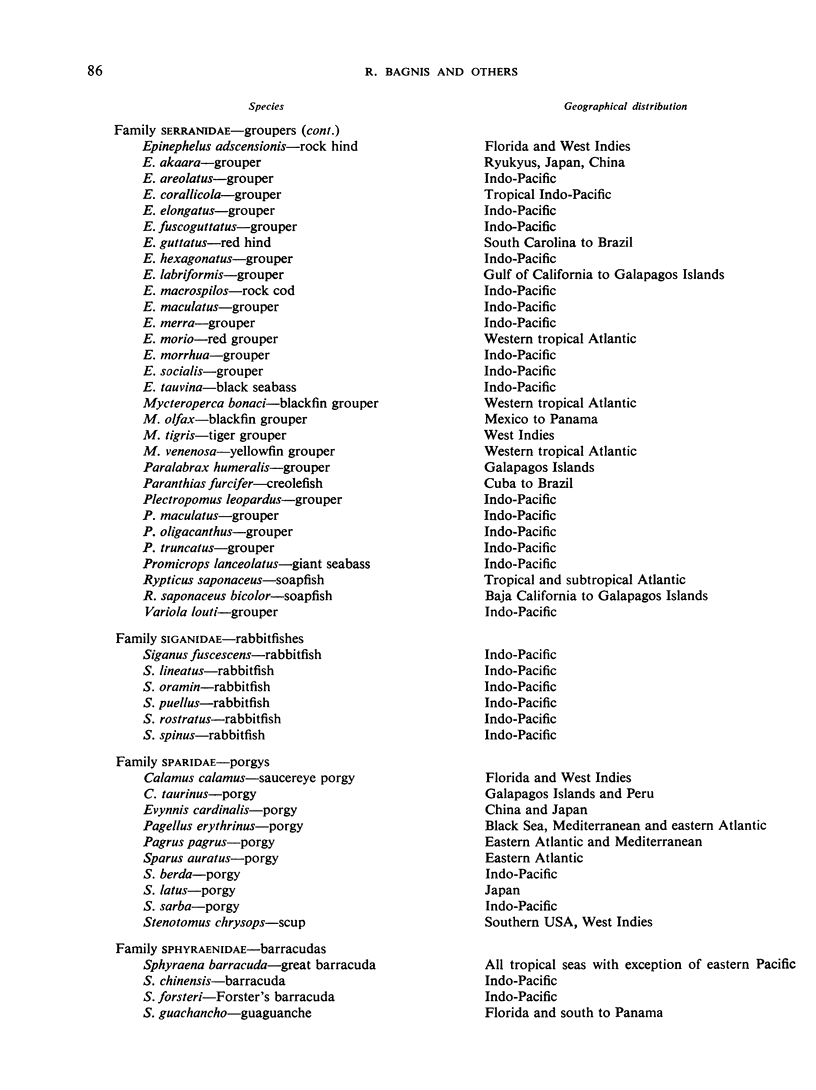
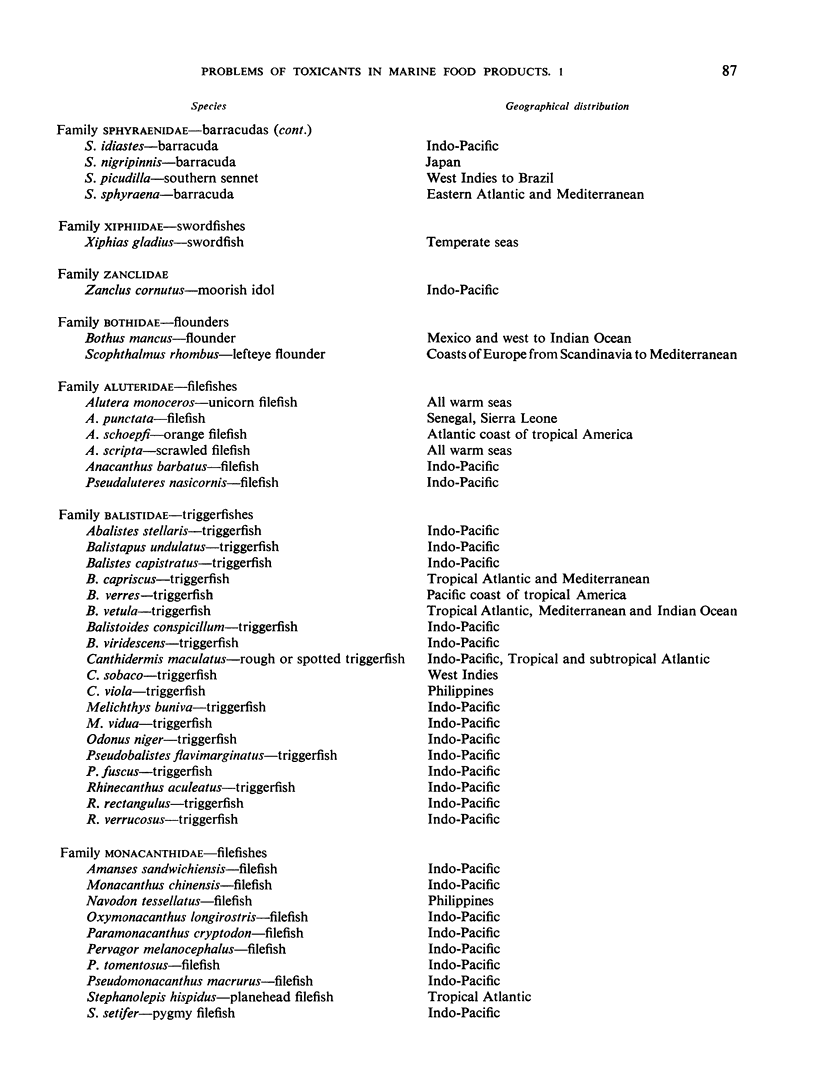
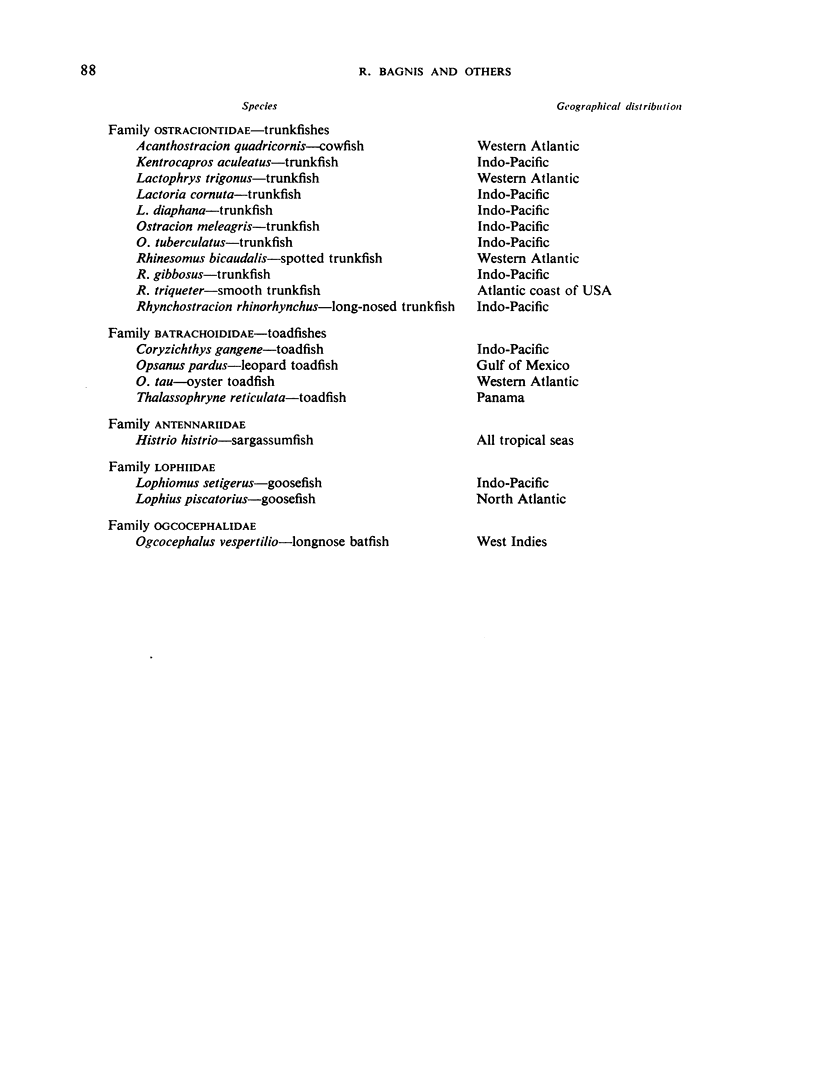
Selected References
These references are in PubMed. This may not be the complete list of references from this article.
- Bagnis R. A propos de quelques cas d'intoxications par des mollusques du genre "Bénitier", dans une Ile de la Société. Bull Soc Pathol Exot Filiales. 1967 Nov-Dec;60(6):580–592. [PubMed] [Google Scholar]
- HALSTEAD B. W. FISH POISONINGS--THEIR DIAGNOSIS, PHARMACOLOGY, AND TREATMENT. Clin Pharmacol Ther. 1964 Sep-Oct;5:615–627. doi: 10.1002/cpt196455615. [DOI] [PubMed] [Google Scholar]
- HALSTEAD B. W. Poisonous fishes. Public Health Rep. 1958 Apr;73(4):302–312. [PMC free article] [PubMed] [Google Scholar]
- Hashimoto Y., Konosu S., Yasumoto T., Inoue A., Noguchi T. Occurrence of toxic crabs in Ryukyu and Amami Islands. Toxicon. 1967 Nov;5(2):85–90. doi: 10.1016/0041-0101(67)90158-4. [DOI] [PubMed] [Google Scholar]
- KAWABATA T., HALSTEAD B. W., JUDEFIND T. F. A report of a series of recent outbreaks of unusual cephalopod and fish intoxications in Japan. Am J Trop Med Hyg. 1957 Sep;6(5):935–939. doi: 10.4269/ajtmh.1957.6.935. [DOI] [PubMed] [Google Scholar]
- Konosu S., Inoue A., Noguchi T., Hashimoto Y. Comparison of crab toxin with saxitoxin and tetrodotoxin. Toxicon. 1968 Oct;6(2):113–117. doi: 10.1016/0041-0101(68)90029-9. [DOI] [PubMed] [Google Scholar]
- Kosaki T. I., Anderson H. H. Marine toxins from the Pacific. IV. Pharmacology of ciguatoxin(s). Toxicon. 1968 Aug;6(1):55–58. doi: 10.1016/0041-0101(68)90066-4. [DOI] [PubMed] [Google Scholar]
- MURTHA E. F. Pharmacological study of poisons from shellfish and puffer fish. Ann N Y Acad Sci. 1960 Nov 17;90:820–836. doi: 10.1111/j.1749-6632.1960.tb26425.x. [DOI] [PubMed] [Google Scholar]
- Mosher H. S. Chemistry (C). Science. 1966 Feb 18;151(3712):860–861. doi: 10.1126/science.151.3712.860-a. [DOI] [PubMed] [Google Scholar]
- Rayner M. D., Kosaki T. I., Fellmeth E. L. Ciguatoxin: more than an anticholinesterase. Science. 1968 Apr 5;160(3823):70–71. doi: 10.1126/science.160.3823.70. [DOI] [PubMed] [Google Scholar]
- TSUDA K., IKUMA S., KAWAMURA M., TACHIKAWA R., MIYADERA T. [On tetrodotoxin. V. Synthesis of C9-base-methylethers]. Chem Pharm Bull (Tokyo) 1962 Sep;10:865–867. [PubMed] [Google Scholar]
- TSUDA K., IKUMA S., KAWAMURA M., TASHIKAWA R., BABA Y., MIYADERA T. [On the structure of the C9-base which is obtained from tetrodotoxin by treatment with lye]. Chem Pharm Bull (Tokyo) 1962 Mar;10:247–249. doi: 10.1248/cpb.10.247. [DOI] [PubMed] [Google Scholar]
- TSUDA K., KAWAMURA M., HAYATSU R. On the constitution of tetrodotoxin. Chem Pharm Bull (Tokyo) 1958 Apr;6(2):225–226. doi: 10.1248/cpb.6.225. [DOI] [PubMed] [Google Scholar]
- TSUDA K., KAWAMURA M. The constituents of the ovaries of globefish. VIII. Studies on tetrodotoxin. Pharm Bull. 1953 Jun;1(2):112–113. doi: 10.1248/cpb1953.1.112. [DOI] [PubMed] [Google Scholar]
- TSUDA K., TACHIKAWA R., SAKAI K., TAMURA C., AMAKASU O., KAWAMURA M., IKUMA S. ON THE STRUCTURE OF TETRODOTOXIN. Chem Pharm Bull (Tokyo) 1964 May;12:642–645. doi: 10.1248/cpb.12.642. [DOI] [PubMed] [Google Scholar]
- TSUDA K., TAMURA C., TACHIKAWA R., SAKAI K., AMAKASU O., KAWAMURA M., IKUMA S. DER KONSTITUTION UND KONFIGURATION DER TETRODONSAEURE. Chem Pharm Bull (Tokyo) 1963 Nov;11:1473–1475. doi: 10.1248/cpb.11.1473. [DOI] [PubMed] [Google Scholar]


